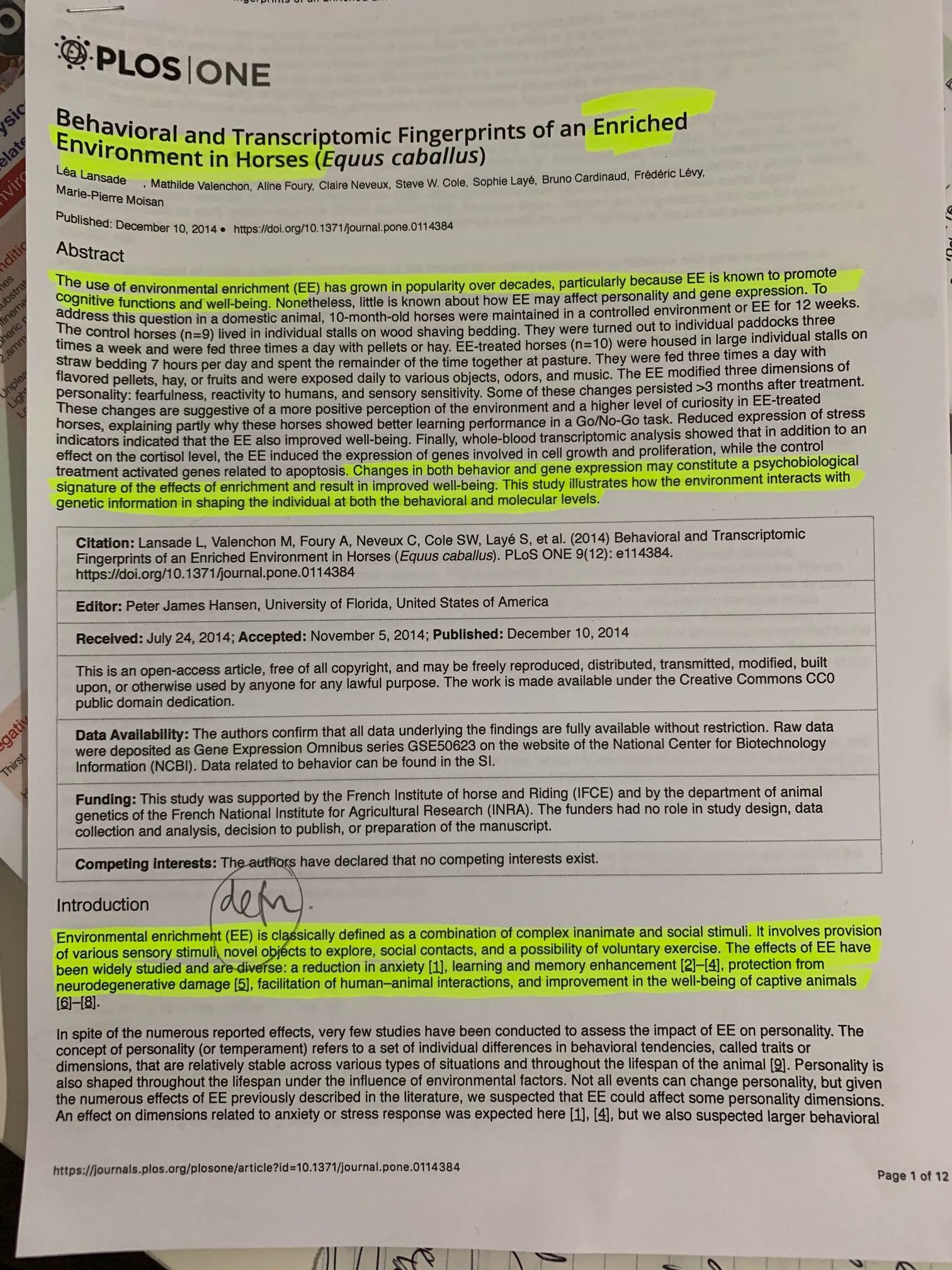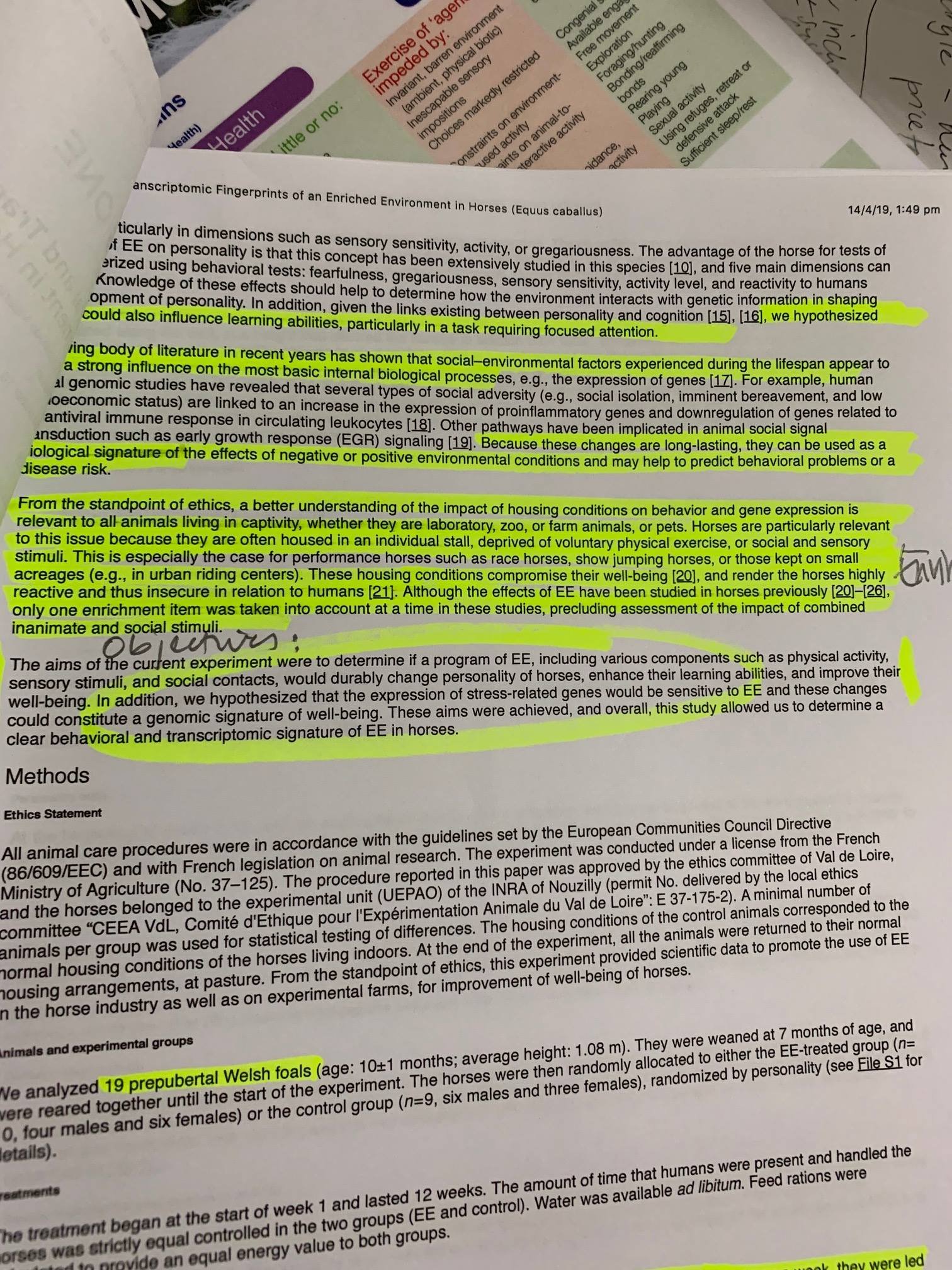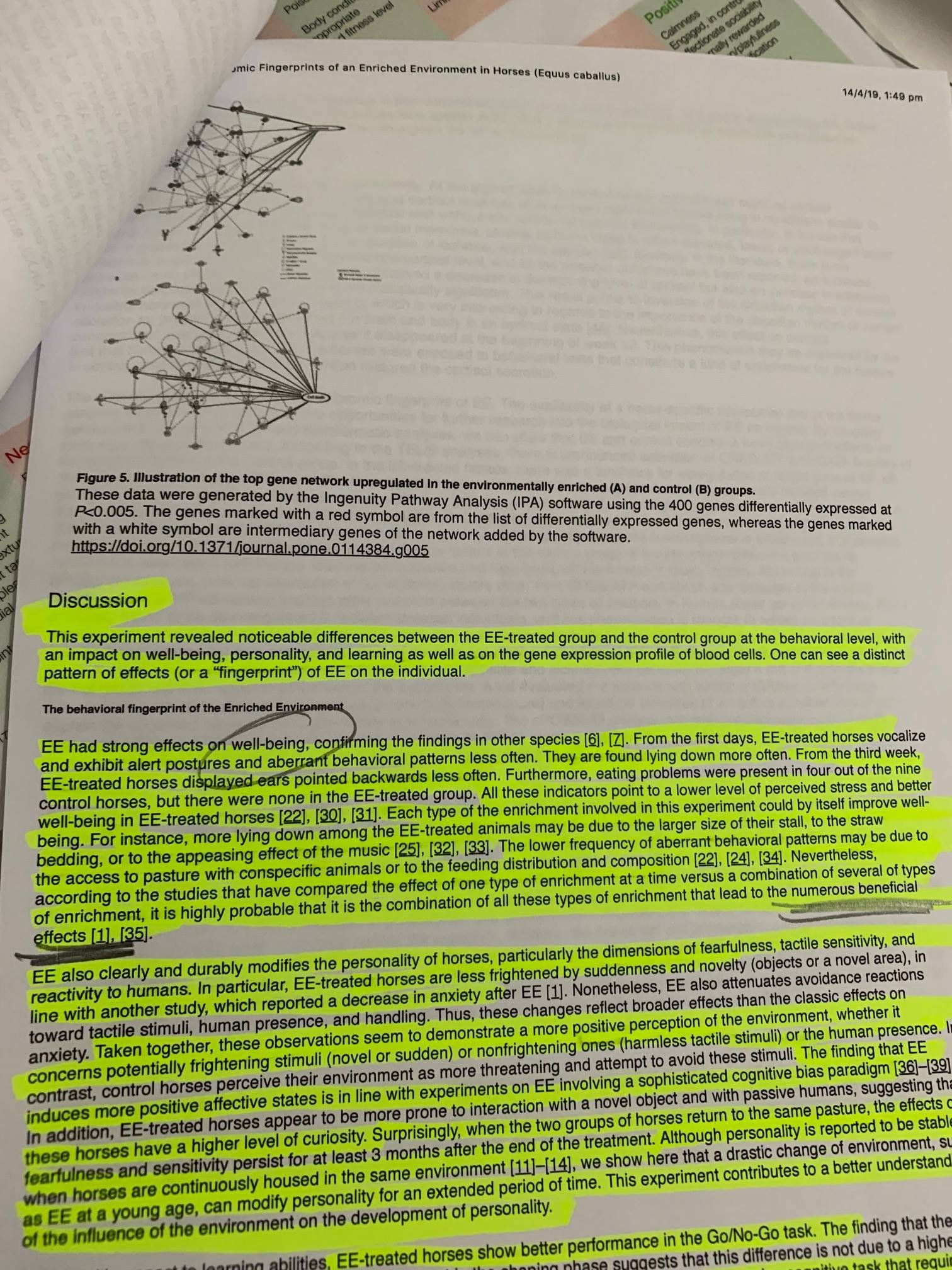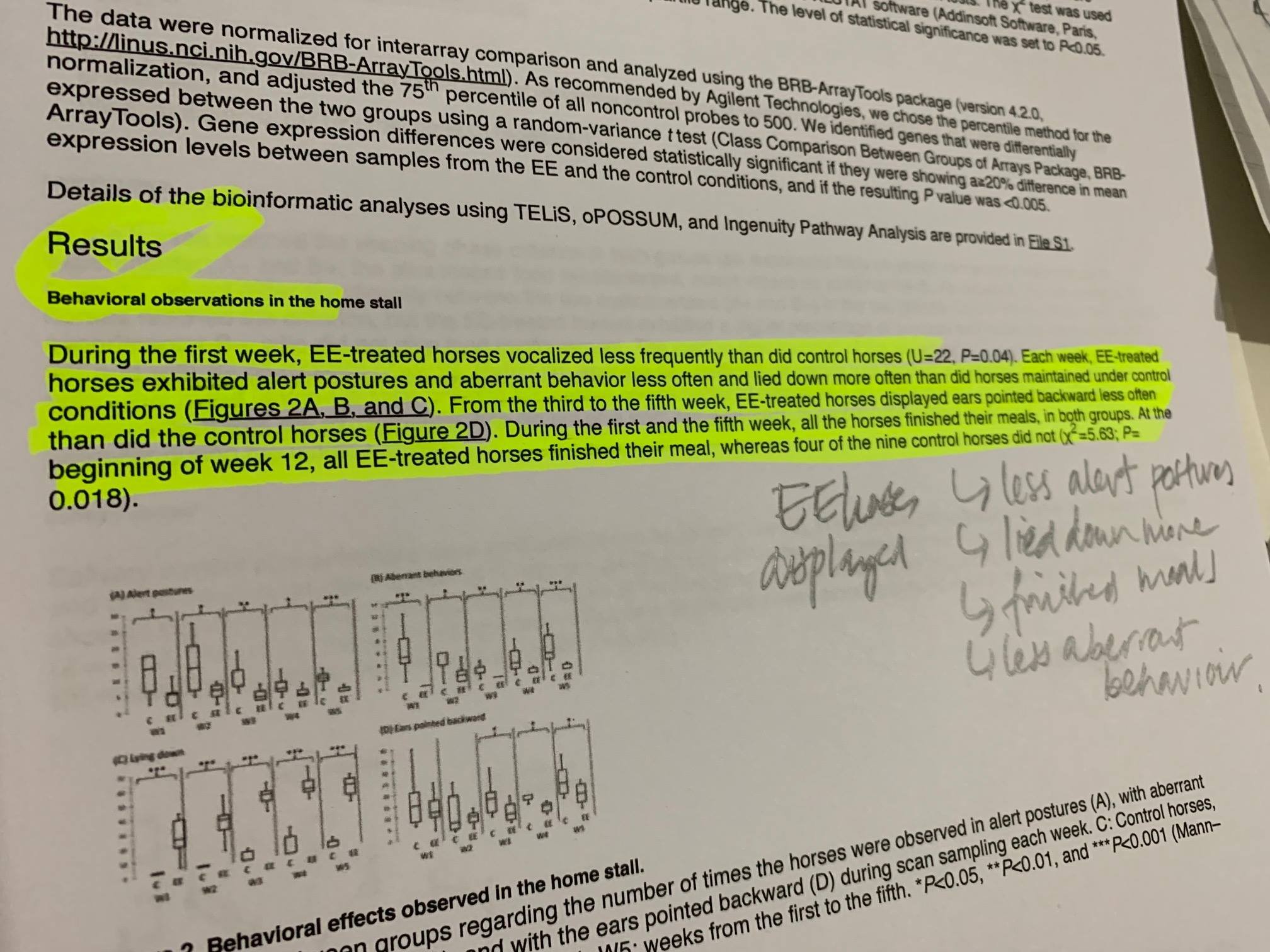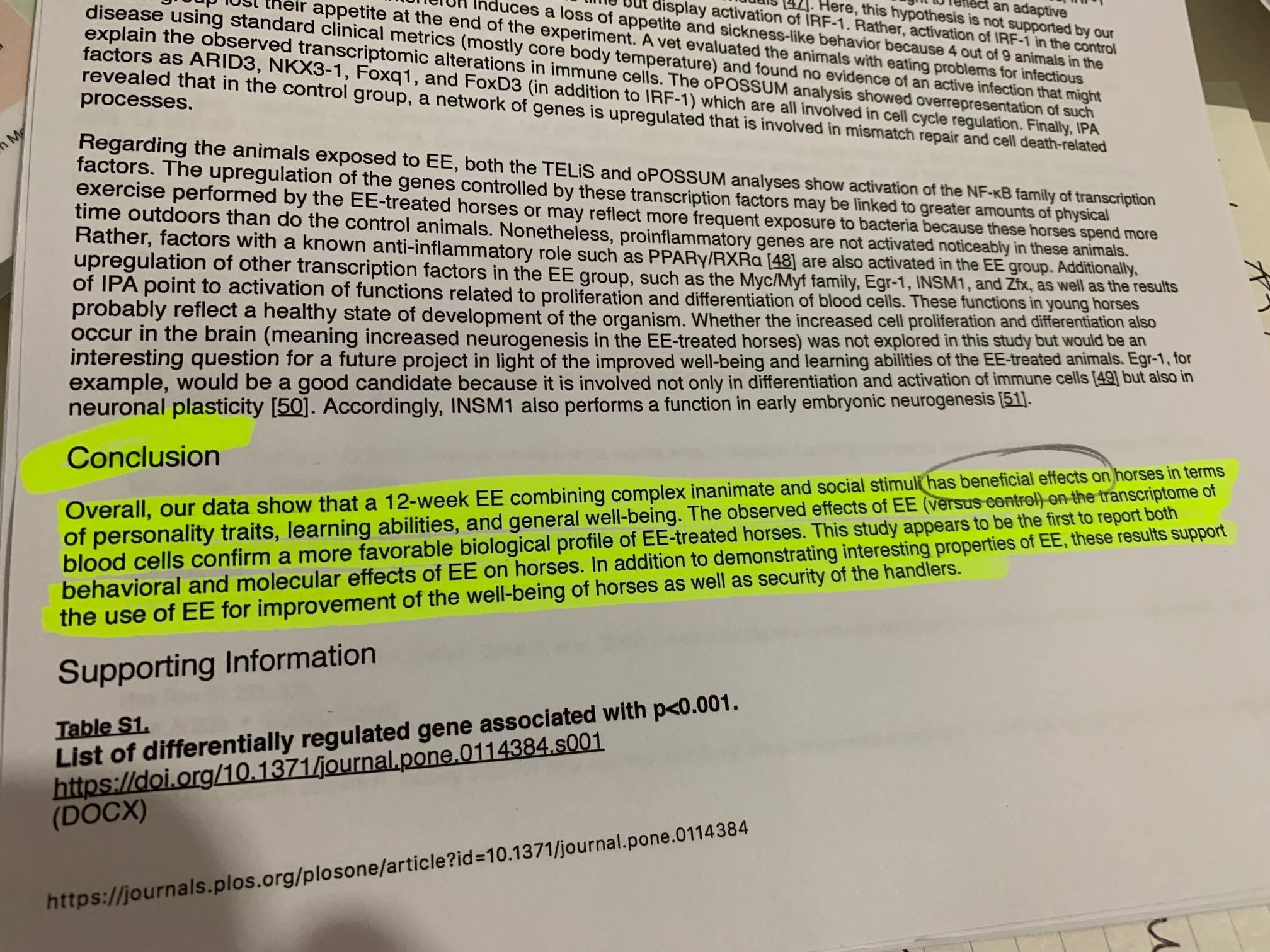Equine science article highlight: Behavioural and Transcriptomic Fingerprints of an Enriched Environment in Horses (Equus caballus)
By Lea Lansade et al.
Published in Plos One, 2014
This environmental enrichment (EE) article is heavy on the science but it has some profound implications for horse facility design that are worthwhile highlighting. It defines EE “as a combination of complex inanimate and social stimuli. It involves provision of various sensory stimuli, novel objects to explore, social contacts and possibility of voluntary exercise. The effects of EE have been widely studied and are diverse: a reduction in anxiety, learning and memory enhancement… improvement of the wellbeing…”and who wouldn't want these worthy ‘effects’ for every horse in the world, no matter what the horse’s role is in our lives!
Let’s think about the fact that unless our horses are completely free roaming and foraging in herds, every aspect of the built environment impacts how our horse’s spend their ‘down time’, including where they train and exercise and all the spatial moments in between. Even horses in fenced pastures are experiencing some level of a human-designed setting– in this case, the arrangement, the size of the enclosed area, the shelter provided, and their proximity to other equines; are all part of the ubiquitous built environment.
Let’s think about the natural repertoire of experiences our horses could experience if they were free roaming and foraging in a herd. How do they meet these evolutionary physical and behavioural needs in the built environments we subject them to? Yes, there are some injurious behaviours we do not want to encourage but generally when we contain them in stables, we can often limit this natural enrichment and ability for free choice of behaviour. This article illustrates the benefits of providing sensory variety, novelty, and the ability to carry out natural behaviours on the “horse’s personality traits, learning abilities and general well-being”.
A daily activity the horses were offered in the study included scratching on different ‘brushy’ surfaces mounted in the stable. This simple provision can often be missing in facilities which sometimes don’t fare well from constantly being rubbed on and pushed about by 400-500kg! Thoughtful selection of construction materials including walling, structure and all the fixtures and fittings can help provide the horses with opportunities to safely rub and satisfy that behavioural urge.
The research indicates that EE has measurable positive effects on the behavioural and gene expression and “how the environment interacts with genetic information in shaping the individual at both the behavioural and molecular levels.” This is fascinating to consider! The research also indicates that these positive behavioural traits and molecular changes due to the EE lasted well beyond the study. Amazing… and another reason to support enrichment where ever the opportunity presents itself in facility design. We can provide physical and visual connections to the surroundings and other horses. Openings can be carefully designed to enable safety and minimising injuries. The height and width and position of openings in walls need not encourage escape attempts but can cater for the eye levels of different sized horses; this leads to a rethink of the repetitive ‘standard size’ stable model.
Another point worth making is that EE doesn't automatically mean the enrichment intensity is 24/7. Again, considering the above example of providing appropriately designed wall openings to outside surrounding, the design should accommodate a horse’s need to move away from another horse’s contact and provide time and space for rest, as much as providing opportunity for connection and stimulation.
Oh, and as part of the EE, the researchers did play a radio but it was only for an hour which would adhere to the above idea of controlled stimuli.
Note: See last week’s article highlight and the negative gastric ulcer connection regarding radios!
If EE reduces anxiety, promotes lying down, enables horse to complete meals and have less aberrant behaviour, then we need to provide this in all our horse’s daily experiences and horse facilities are a large part of that opportunity.
Of course where possible daily time out at pasture with another horse is desirable, but where this is deemed not possible, the stable environment needs to accommodate this enriched life and the positive experiences of a horse on a continual basis.
(Please note that the two photos posted are not from this research study but included as examples of different facilities providing varying levels of environmental enrichment in horse accomodation)



